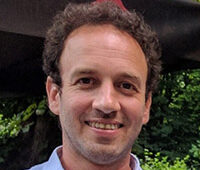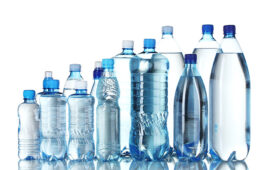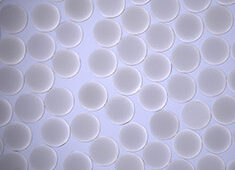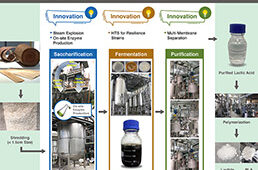An
international team of scientists is rewriting a page from the quantum
physics rulebook using a University of Florida laboratory once dubbed
the coldest spot in the universe.
Much
of what we know about quantum mechanics is theoretical and tested via
computer modeling because quantum systems, like electrons whizzing
around the nucleus of an atom, are difficult to pin down for
observation. One can, however, slow particles down and catch them in the
quantum act by subjecting them to extremely cold temperatures. New
research, published in the Sept. 20 edition of the journal Nature,
describes how this freeze-frame approach was recently used to overturn
an accepted rule of thumb in quantum theory.
“We
are in the age of quantum mechanics,” said Neil Sullivan, a UF physics
professor and director of the National High Magnetic Field Laboratory
High B/T Facility on the UF campus—home of the Microkelvin lab where
experiments can be conducted in near-absolute zero temperatures. “If
you’ve had an MRI, you have made use of a quantum technology.”
The
magnet that powers an MRI scanner is a superconducting coil transformed
into a quantum state by very cold liquid helium. Inside the coil,
electric current flows friction free.
Quantum
magnets and other strange, almost otherworldly occurrences in quantum
mechanics could inspire the next big breakthroughs in computing,
alternative energy and transportation technologies such as magnetic
levitating trains, Sullivan said. But innovation cannot proceed without a
proper set of guidelines to help engineers navigate the quantum road.
That’s
where the Microkelvin lab comes in. It is one of the few facilities in
the world equipped to deliver the extremely cold temperatures needed to
slow what Sullivan calls the “higgledy-piggledy” world of quantum
systems at normal temperatures to a manageable pace where it can be
observed and manipulated.
“Room
temperature is approximately 300 kelvin,” Sullivan said. “Liquid
hydrogen pumped into a rocket at the Kennedy Space Center is at 20
kelvin.”
Physicists
need to cool things down to 1 millikelvin, one thousandth of a kelvin
above absolute zero, or -459.67 degrees Fahrenheit, to bring matter into
a different realm where quantum properties can be explored.
One
fundamental state of quantum mechanics that scientists are keen to
understand more fully is a fragile, ephemeral phase of matter called a
Bose-Einstein Condensate. In this state, individual particles that make
up a material begin to act as a single coherent unit. It’s a tricky
condition to induce in a laboratory setting, but one that researchers
need to explore if technology is ever to fully exploit the properties of
the quantum world.
Two
theorists, Tommaso Roscilde at the University of Lyon, France, and Rong
Yu from Rice University in Houston, developed the underlying ideas for
the study and asked a colleague, Armando Paduan-Filho from the
University of Sao Paulo in Brazil, to engineer the crystalline sample
used in the experiment.
“Our
measurements definitively tested an important prediction about a
particular behavior in a Bose-Einstein Condensate,” said Vivien Zapf, a
staff scientist at the National High Magnetic Field Laboratory at Los
Alamos and a driving force behind the international collaboration.
The
experiment monitored the atomic spin of subatomic particles called
bosons in the crystal to see when the transition to Bose-Einstein
Condensate was achieved, and then further cooled the sample to document
the exact point where the condensate properties decayed. They observed
the anticipated phenomenon when they took the sample down to 1
millikelvin.
The
crystal used in the experiment had been doped with impurities in an
effort to create more of a real world scenario, Zapf said. “It’s nice to
know what happens in pure samples, but the real world, is messy and we
need to know what the quantum rules are in those situations.”
Having
performed a series of simulations in advance, they knew that the
experiment would require them to generate temperatures down to 1
millikelvin.
“You
have to go to the Microkelvin Laboratory at UF for that,” she said. The
lab is housed within the National High Magnetic Field Laboratory High
B/T Facility at UF, funded by the National Science Foundation. Other
laboratories can get to the extreme temperature required, but none of
them can sustain it long enough to collect all of the data needed for
the experiment.
“It
took six months to get the readings,” said Liang Yin, an assistant
scientist in the UF physics department who operated the equipment in the
Microkelvin lab. “Because the magnetic field we used to control the
wave intensity in the sample also heats it up. You have to adjust it
very slowly.”
Their
findings literally rewrote the rule for predicting the conditions under
which the transition would occur between the two quantum states.
“All
the world should be watching what happens as we uncover properties of
systems at these extremely low temperatures,” Sullivan said. “A
superconducting wire is superconducting because of this Bose-Einstein
Condensation concept. If we are ever to capitalize on it for quantum
computing or magnetic levitation for trains, we have to thoroughly
understand it.”
Bose glass and Mott glass of quasiparticles in a doped quantum magnet
Source: University of Florida




